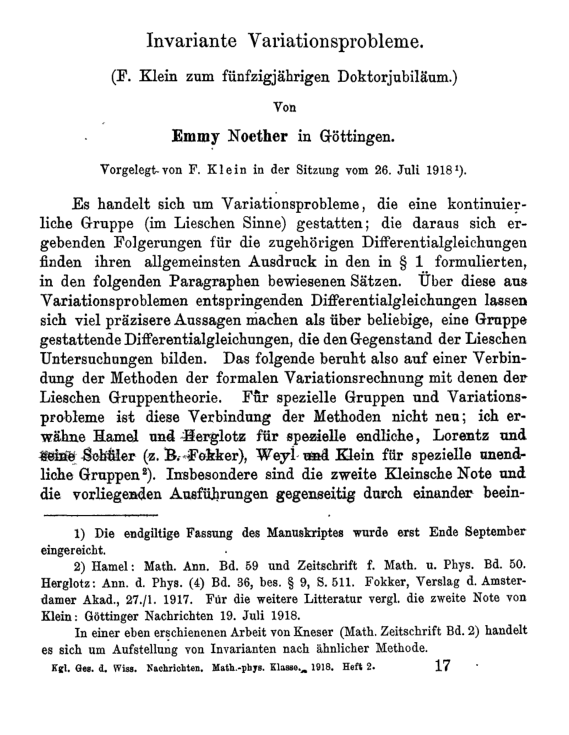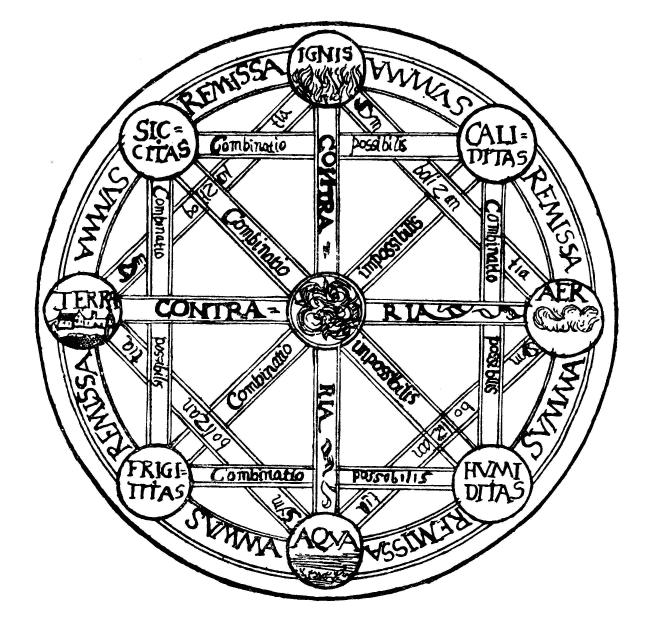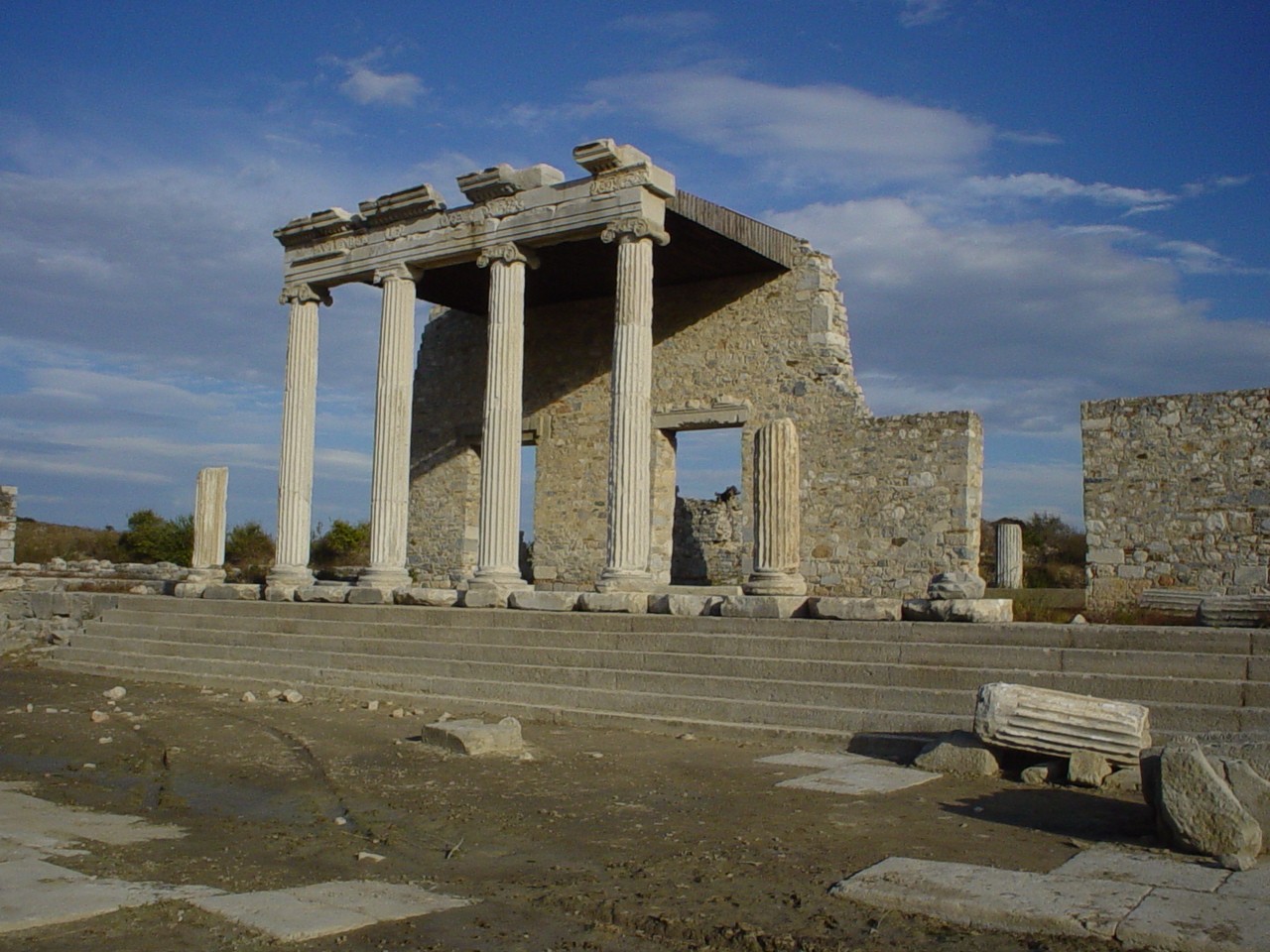|
Conservation Of Energy
The law of conservation of energy states that the total energy of an isolated system remains constant; it is said to be Conservation law, ''conserved'' over time. In the case of a Closed system#In thermodynamics, closed system, the principle says that the total amount of energy within the system can only be changed through energy entering or leaving the system. Energy can neither be created nor destroyed; rather, it can only be transformed or transferred from one form to another. For instance, chemical energy is Energy conversion, converted to kinetic energy when a stick of dynamite explodes. If one adds up all forms of energy that were released in the explosion, such as the kinetic energy and potential energy of the pieces, as well as heat and sound, one will get the exact decrease of chemical energy in the combustion of the dynamite. Classically, the conservation of energy was distinct from the conservation of mass. However, special relativity shows that mass is related to en ... [...More Info...] [...Related Items...] OR: [Wikipedia] [Google] [Baidu] |
Energy
Energy () is the physical quantity, quantitative physical property, property that is transferred to a physical body, body or to a physical system, recognizable in the performance of Work (thermodynamics), work and in the form of heat and light. Energy is a Conservation law, conserved quantity—the law of conservation of energy states that energy can be Energy transformation, converted in form, but not created or destroyed. The unit of measurement for energy in the International System of Units (SI) is the joule (J). Forms of energy include the kinetic energy of a moving object, the potential energy stored by an object (for instance due to its position in a Classical field theory, field), the elastic energy stored in a solid object, chemical energy associated with chemical reactions, the radiant energy carried by electromagnetic radiation, the internal energy contained within a thermodynamic system, and rest energy associated with an object's rest mass. These are not mutual ... [...More Info...] [...Related Items...] OR: [Wikipedia] [Google] [Baidu] |
Noether's Theorem
Noether's theorem states that every continuous symmetry of the action of a physical system with conservative forces has a corresponding conservation law. This is the first of two theorems (see Noether's second theorem) published by the mathematician Emmy Noether in 1918. The action of a physical system is the integral over time of a Lagrangian function, from which the system's behavior can be determined by the principle of least action. This theorem applies to continuous and smooth symmetries of physical space. Noether's formulation is quite general and has been applied across classical mechanics, high energy physics, and recently statistical mechanics. Noether's theorem is used in theoretical physics and the calculus of variations. It reveals the fundamental relation between the symmetries of a physical system and the conservation laws. It also made modern theoretical physicists much more focused on symmetries of physical systems. A generalization of the formulations ... [...More Info...] [...Related Items...] OR: [Wikipedia] [Google] [Baidu] |
Simon Stevin
Simon Stevin (; 1548–1620), sometimes called Stevinus, was a County_of_Flanders, Flemish mathematician, scientist and music theorist. He made various contributions in many areas of science and engineering, both theoretical and practical. He also translated various mathematical terms into Dutch language, Dutch, making it one of the few European languages in which the word for mathematics, ''wikt:en:wiskunde#Dutch, wiskunde'' (''wikt:en:wis#Dutch, wis'' and ''wikt:en:kunde#Dutch, kunde'', i.e., "the knowledge of what is certain"), was not a loanword from Greek language, Greek but a calque via Latin. He also replaced the word ''wikt:en:chemie#Dutch, chemie'', the Dutch for chemistry, by ''wikt:en:scheikunde#Dutch, scheikunde'' ("the art of separating"), made in analogy#Linguistics, analogy with ''wikt:en:wiskunde#Dutch, wiskunde''. Biography Very little is known with certainty about Simon Stevin's life, and what we know is mostly inferred from other recorded facts.E. J. Dijkste ... [...More Info...] [...Related Items...] OR: [Wikipedia] [Google] [Baidu] |
Epicurus
Epicurus (, ; ; 341–270 BC) was an Greek philosophy, ancient Greek philosopher who founded Epicureanism, a highly influential school of philosophy that asserted that philosophy's purpose is to attain as well as to help others attain tranquil lives, characterized by freedom from fear and the absence of pain. Epicurus advocated that people were best able to pursue philosophy by living a self-sufficient life surrounded by friends; he and his followers were known for eating simple meals and discussing a wide range of philosophical subjects at "the Garden", the school he established in Athens. Epicurus taught that although the gods exist, they have no involvement in human affairs. Like the earlier philosopher Democritus, Epicurus claimed that all occurrences in the natural world are ultimately the result of tiny, invisible particles known as ''Atomism, atoms'' moving and interacting in empty space, though Epicurus also deviated from Democritus by proposing the idea of Clinamen, ... [...More Info...] [...Related Items...] OR: [Wikipedia] [Google] [Baidu] |
Classical Element
The classical elements typically refer to Earth (classical element), earth, Water (classical element), water, Air (classical element), air, Fire (classical element), fire, and (later) Aether (classical element), aether which were proposed to explain the nature and complexity of all matter in terms of simpler Substance theory, substances. Ancient cultures in Ancient Greece, Greece, Angola, Ancient Tibet, Tibet, Ancient India, India, and Mali had similar lists which sometimes referred, in local languages, to "air" as "wind", and to "aether" as "space". These different cultures and even individual philosophers had widely varying explanations concerning their attributes and how they related to observable phenomena as well as cosmology. Sometimes these theories overlapped with mythology and were personification, personified in deities. Some of these interpretations included atomism (the idea of very small, indivisible portions of matter), but other interpretations considered the ... [...More Info...] [...Related Items...] OR: [Wikipedia] [Google] [Baidu] |
Empedocles
Empedocles (; ; , 444–443 BC) was a Ancient Greece, Greek pre-Socratic philosopher and a native citizen of Akragas, a Greek city in Sicily. Empedocles' philosophy is known best for originating the Cosmogony, cosmogonic theory of the four classical elements. He also proposed forces he called Love and Strife which would mix and separate the elements, respectively. Empedocles challenged the practice of animal sacrifice and killing animals for food. He developed a distinctive doctrine of reincarnation. He is generally considered the last Greek philosopher to have recorded his ideas in verse. Some of his work survives, more than is the case for any other pre-Socratic philosopher. Empedocles' death was mythologized by ancient writers, and has been the subject of a number of literary treatments. Life The exact dates of Empedocles' birth and death are unknown, and ancient accounts of his life conflict on the exact details. However, they agree that he was born in the early 5th cent ... [...More Info...] [...Related Items...] OR: [Wikipedia] [Google] [Baidu] |
Thales Of Miletus
Thales of Miletus ( ; ; ) was an Ancient Greek pre-Socratic philosopher from Miletus in Ionia, Asia Minor. Thales was one of the Seven Sages, founding figures of Ancient Greece. Beginning in eighteenth-century historiography, many came to regard him as the first philosopher in the Greek tradition, breaking from the prior use of mythology to explain the world and instead using natural philosophy. He is thus otherwise referred to as the first to have engaged in mathematics, science, and deductive reasoning. Thales's view that all of nature is based on the existence of a single ultimate substance, which he theorized to be water, was widely influential among the philosophers of his time. Thales thought the Earth floated on water. In mathematics, Thales is the namesake of Thales's theorem, and the intercept theorem can also be referred to as Thales's theorem. Thales was said to have calculated the heights of the pyramids and the distance of ships from the shore. In scien ... [...More Info...] [...Related Items...] OR: [Wikipedia] [Google] [Baidu] |
Ancient Philosophy
This page lists some links to ancient philosophy, namely philosophical thought extending as far as early post-classical history (). Overview Genuine philosophical thought, depending upon original individual insights, arose in many cultures roughly contemporaneously. Karl Jaspers termed the intense period of philosophical development beginning around the 7th century BCE and concluding around the 3rd century BCE an Axial Age in human thought. In Western philosophy, the spread of Christianity in the Roman Empire marked the ending of Hellenistic philosophy and ushered in the beginnings of medieval philosophy, whereas in the Middle East, the spread of Islam through the Caliphate, Arab Empire marked the end of #Ancient Iranian philosophy, Old Iranian philosophy and ushered in the beginnings of early Islamic philosophy. Ancient Greek and Roman philosophy Philosophers Pre-Socratic philosophers * Milesian School :Thales (624 – c 546 BCE) :Anaximander (610 – 546 BCE) :Anaximen ... [...More Info...] [...Related Items...] OR: [Wikipedia] [Google] [Baidu] |
Observable
In physics, an observable is a physical property or physical quantity that can be measured. In classical mechanics, an observable is a real-valued "function" on the set of all possible system states, e.g., position and momentum. In quantum mechanics, an observable is an operator, or gauge, where the property of the quantum state can be determined by some sequence of operations. For example, these operations might involve submitting the system to various electromagnetic fields and eventually reading a value. Physically meaningful observables must also satisfy transformation laws that relate observations performed by different observers in different frames of reference. These transformation laws are automorphisms of the state space, that is bijective transformations that preserve certain mathematical properties of the space in question. Quantum mechanics In quantum mechanics, observables manifest as self-adjoint operators on a separable complex Hilbert space ... [...More Info...] [...Related Items...] OR: [Wikipedia] [Google] [Baidu] |
Expectation Value (quantum Mechanics)
In quantum mechanics, the expectation value is the probabilistic expected value of the result (measurement) of an experiment. It can be thought of as an average of all the possible outcomes of a measurement as weighted by their likelihood, and as such it is not the ''most'' probable value of a measurement; indeed the expectation value may have zero probability of occurring (e.g. measurements which can only yield integer values may have a non-integer mean), like the expected value from statistics. It is a fundamental concept in all areas of quantum physics. Operational definition Consider an Operator_(physics), operator A. The expectation value is then \langle A \rangle = \langle \psi , A , \psi \rangle in Bra ket notation, Dirac notation with , \psi \rangle a Normalization (statistics), normalized state vector. Formalism in quantum mechanics In quantum theory, an experimental setup is described by the observable A to be measured, and the Quantum state, state \sigma of the ... [...More Info...] [...Related Items...] OR: [Wikipedia] [Google] [Baidu] |
Quantum Mechanics
Quantum mechanics is the fundamental physical Scientific theory, theory that describes the behavior of matter and of light; its unusual characteristics typically occur at and below the scale of atoms. Reprinted, Addison-Wesley, 1989, It is the foundation of all quantum physics, which includes quantum chemistry, quantum field theory, quantum technology, and quantum information science. Quantum mechanics can describe many systems that classical physics cannot. Classical physics can describe many aspects of nature at an ordinary (macroscopic and Microscopic scale, (optical) microscopic) scale, but is not sufficient for describing them at very small submicroscopic (atomic and subatomic) scales. Classical mechanics can be derived from quantum mechanics as an approximation that is valid at ordinary scales. Quantum systems have Bound state, bound states that are Quantization (physics), quantized to Discrete mathematics, discrete values of energy, momentum, angular momentum, and ot ... [...More Info...] [...Related Items...] OR: [Wikipedia] [Google] [Baidu] |
General Relativity
General relativity, also known as the general theory of relativity, and as Einstein's theory of gravity, is the differential geometry, geometric theory of gravitation published by Albert Einstein in 1915 and is the current description of gravitation in modern physics. General theory of relativity, relativity generalizes special relativity and refines Newton's law of universal gravitation, providing a unified description of gravity as a geometric property of space and time in physics, time, or four-dimensional spacetime. In particular, the ''curvature of spacetime'' is directly related to the energy and momentum of whatever is present, including matter and radiation. The relation is specified by the Einstein field equations, a system of second-order partial differential equations. Newton's law of universal gravitation, which describes gravity in classical mechanics, can be seen as a prediction of general relativity for the almost flat spacetime geometry around stationary mass ... [...More Info...] [...Related Items...] OR: [Wikipedia] [Google] [Baidu] |








